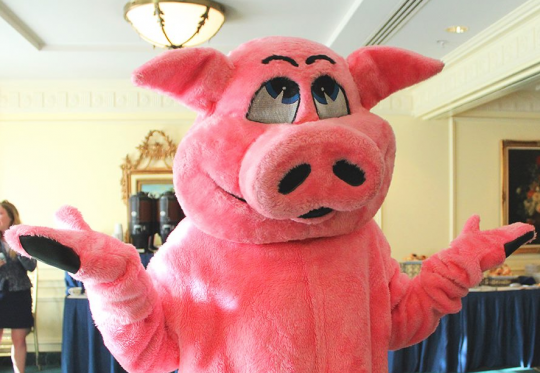Watchdog group Citizens Against Government Waste (CAGW) released its annual Congressional Pig Book on Wednesday, shedding light on the federal government's pork-barrel spending.
Every year, CAGW releases its Pig Book listing federal government "pork" projects. The group defines a "pork" project as "a line-item in an appropriations bill that designates tax dollars for a specific purpose in circumvention of established budgetary procedures." In order to meet the criteria to qualify as pork, a project must meet seven criteria.
In the 2018 Pig Book, CAGW cites 232 earmarks, marking a 42.3 percent increase from Fiscal Year 2017. The earmarks in question come to a total of $14.7 billion for FY 2018, over double the $6.8 billion from the year prior.
CAGW attributes much of the increase to the Bipartisan Budget Act (BBA) of 2018, where spending was increased in nearly every category in order to get it passed by Congress.
While CAGW names the sponsor of different spending measures when it can, it notes the BBA made it difficult to identify who was behind many items in the 2018 list.
"The FY 2018 earmarks were again contained in a consolidated appropriations package, which presents its own challenges regarding how the taxpayers’ money is being spent," the Pig Book states. "Throwing all the earmarks into one large bill makes it more difficult to identify and eliminate the projects than if Congress adhered to regular order and considered the spending bills individually."
The report also voices concerns with the inadequacy of an earmark moratorium, which was first applied in FY 2012.
While members of Congress may have thought that earmarks would be on the back burner during this election year, the release of the Congressional Pig Book should bring the issue to the forefront. It will be much harder, even hypocritical, to argue that spending will be restrained in the next Congress following a 13.4 percent increase in discretionary spending and a 116.2 percent increase in the cost of earmarks
[...]
Unfortunately, the earmark moratorium has not only failed to eliminate earmarks, but also has rendered the process patently less transparent. There are no names, no list or chart of earmarks, and limited information on where and how the money will be spent.
Members of Congress will argue that their standards differ from the earmark criteria used in the Pig Book, and that the appropriations bills are earmarkfree according to their definition. However, the difference in the definition of earmarks between CAGW and Congress has existed since the first Pig Book in 1991.
The pork-free claim can also be challenged based on the inclusion of projects that have appeared in past appropriations bills as earmarks. In addition to meeting CAGW’s long-standing seven-point criteria, to qualify for the 2018 Pig Book a project must have appeared in prior years as an earmark. The total number and cost of earmarks are, therefore, quite conservative.
The question for those in Congress who deny the existence of earmarks in the appropriations bills is: Why were these projects previously considered earmarks, but not in 2018?
Among the items mentioned in this year's Pig Book are $6 million for the Appalachian Regional Commission and the Delta Regional Authority, $65 million for Pacific coastal salmon recovery, nearly $2.7 billion for 20 F-35 Joint Strike Fighters, $2.75 million for the National Capital Arts and Cultural Affairs program, and $16.7 million for the East-West Center in Hawaii.
Members of both parties are responsible for the wasteful spending.
The debut of the Pig Book comes with an event on Capitol Hill where, this year, attendees were joined by Faye, a live pot-bellied pig from Richmond, Virginia.
